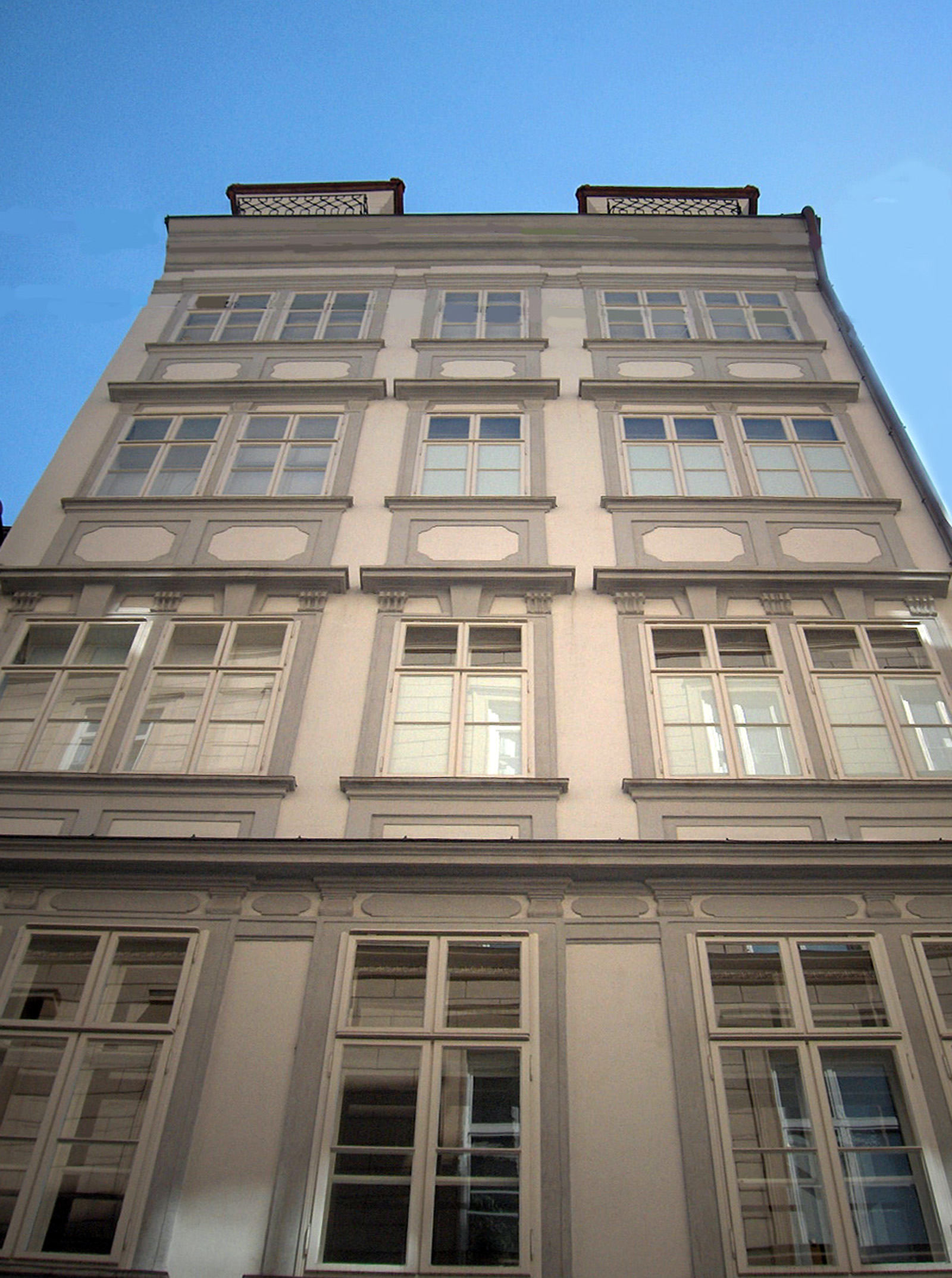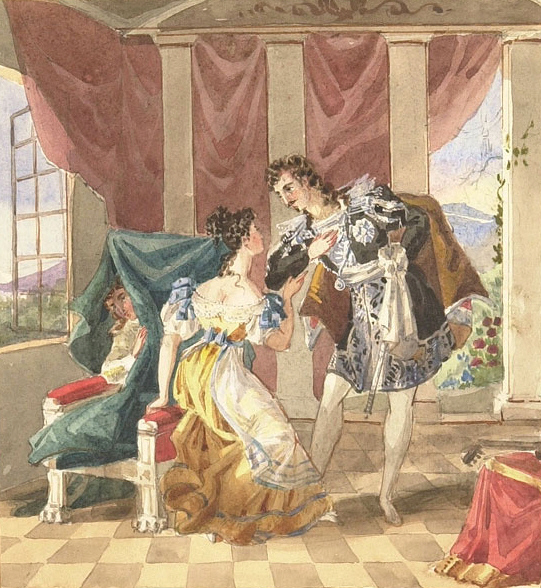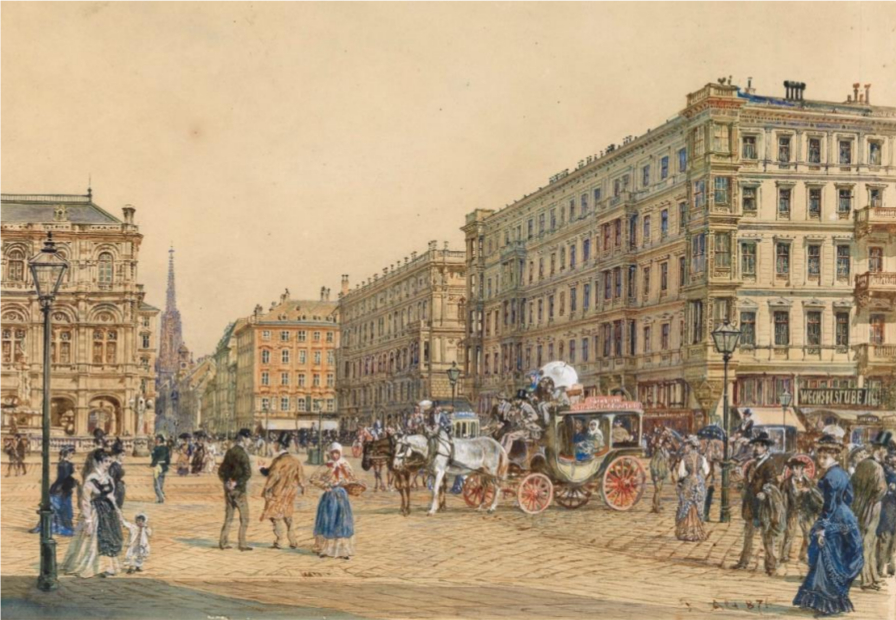|
Mozarthaus Vienna
The Mozarthaus Vienna (also known as the Figaro House) was Wolfgang Amadeus Mozart, Mozart's residence from 1784 to 1787. The building is located in Vienna's Innere Stadt, Old Town, not far from St. Stephen's Cathedral, Vienna, St. Stephen's Cathedral, and is his only surviving Viennese residence. It is now a museum. History The house is located at Domgasse 5. It was built in the 17th century, originally with two floors, and was redeveloped in 1716. Mozart rented rooms here from 1784, at which time it was also known as the Camesina House, after the family who had owned it since 1720. The original entrance of the house facing Schulerstraße (the one used by Mozart) was walled up to make room for a shop, and the house is entered today from its rear in the Domgasse. In 1941, the 150th anniversary of Mozart's death, his former rooms were opened to the public as part of "Imperial German Mozart Week", a Nazism, Nazi event intended to honour him as a "typically German" composer (in ... [...More Info...] [...Related Items...] OR: [Wikipedia] [Google] [Baidu] |
Wien
Vienna ( ; ; ) is the capital city, capital, List of largest cities in Austria, most populous city, and one of Federal states of Austria, nine federal states of Austria. It is Austria's primate city, with just over two million inhabitants. Its larger metropolitan area has a population of nearly 2.9 million, representing nearly one-third of the country's population. Vienna is the Culture of Austria, cultural, Economy of Austria, economic, and Politics of Austria, political center of the country, the List of cities in the European Union by population within city limits, fifth-largest city by population in the European Union, and the most-populous of the List of cities and towns on the river Danube, cities on the river Danube. The city lies on the eastern edge of the Vienna Woods (''Wienerwald''), the northeasternmost foothills of the Alps, that separate Vienna from the more western parts of Austria, at the transition to the Pannonian Basin. It sits on the Danube, and is ... [...More Info...] [...Related Items...] OR: [Wikipedia] [Google] [Baidu] |
The Marriage Of Figaro
''The Marriage of Figaro'' (, ), K. 492, is a ''commedia per musica'' (opera buffa) in four acts composed in 1786 by Wolfgang Amadeus Mozart, with an Italian libretto written by Lorenzo Da Ponte. It premiered at the Burgtheater in Vienna on 1 May 1786. The opera's libretto is based on the 1784 stage comedy by Pierre Beaumarchais, '' La folle journée, ou le Mariage de Figaro'' ("The Mad Day, or The Marriage of Figaro"). It tells how the servants Figaro and Susanna succeed in getting married, foiling the efforts of their philandering employer Count Almaviva to seduce Susanna and teaching him a lesson in fidelity. Considered one of the greatest operas ever written, it is a cornerstone of the repertoire and appears consistently among the top ten in the Operabase list of most frequently performed operas. In 2017, BBC News Magazine asked 172 opera singers to vote for the best operas ever written. ''The Marriage of Figaro'' came in first out of the 20 operas featured, with t ... [...More Info...] [...Related Items...] OR: [Wikipedia] [Google] [Baidu] |
Biographical Museums In Austria
A biography, or simply bio, is a detailed description of a person's life. It involves more than just basic facts like education, work, relationships, and death; it portrays a person's experience of these life events. Unlike a profile or curriculum vitae (résumé), a biography presents a subject's life story, highlighting various aspects of their life, including intimate details of experience, and may include an analysis of the subject's personality. Biographical works are usually non-fiction, but fiction can also be used to portray a person's life. One in-depth form of biographical coverage is called legacy writing. Works in diverse media, from literature to film, form the genre known as biography. An authorized biography is written with the permission, cooperation, and at times, participation of a subject or a subject's heirs. An unauthorized biography is one written without such permission or participation. An autobiography is written by the person themselves, sometimes wit ... [...More Info...] [...Related Items...] OR: [Wikipedia] [Google] [Baidu] |
Museums Established In 2006
A museum is an institution dedicated to displaying or preserving culturally or scientifically significant objects. Many museums have exhibitions of these objects on public display, and some have private collections that are used by researchers and specialists. Museums host a much wider range of objects than a library, and they usually focus on a specific theme, such as the arts, science, natural history or local history. Public museums that host exhibitions and interactive demonstrations are often tourist attractions, and many draw large numbers of visitors from outside of their host country, with the most visited museums in the world attracting millions of visitors annually. Since the establishment of the earliest known museum in ancient times, museums have been associated with academia and the preservation of rare items. Museums originated as private collections of interesting items, and not until much later did the emphasis on educating the public take root. Etymology The ... [...More Info...] [...Related Items...] OR: [Wikipedia] [Google] [Baidu] |
Buildings And Structures In Innere Stadt
A building or edifice is an enclosed structure with a roof, walls and windows, usually standing permanently in one place, such as a house or factory. Buildings come in a variety of sizes, shapes, and functions, and have been adapted throughout history for numerous factors, from building materials available, to weather conditions, land prices, ground conditions, specific uses, prestige, and aesthetic reasons. To better understand the concept, see ''Nonbuilding structure'' for contrast. Buildings serve several societal needs – occupancy, primarily as shelter from weather, security, living space, privacy, to store belongings, and to comfortably live and work. A building as a shelter represents a physical separation of the human habitat (a place of comfort and safety) from the ''outside'' (a place that may be harsh and harmful at times). buildings have been objects or canvasses of much artistic expression. In recent years, interest in sustainable planning and building pr ... [...More Info...] [...Related Items...] OR: [Wikipedia] [Google] [Baidu] |
Tourist Attractions In Vienna
The tourist attractions of Vienna concentrate in three distinct areas. The largest cluster, centred on Schönbrunn Palace, attracted around five million visitors in 2009, down from six million in 2008. Museums and exhibitions of Hofburg Palace accounted for nearly two million visitors in 2008, with a significant decline in 2009. The third, and the newest, cluster of modern art museums in Museumsquartier attracted less than one million visitors.According to the Vienna Tourist Board, the Schönbrunn cluster includes the Palace itself, Tiergarten Schönbrunn, the Palmenhaus, the Wüstenhaus, the Imperial Coach Collection (Wagenburg), the Maze Gardens (Irrgarten) and the Privy Gardens (KronPrinzgarten). See Sehenwurdigkeiten 2007 (in German)' and Sehenwurdigkeiten 2008 (in German)' for exact composition of each of three clusters. Nearby duo of Kunsthistorisches and Naturhistorisches museums, located halfway between Museumsquartier and Hofburg, also reported around one million visito ... [...More Info...] [...Related Items...] OR: [Wikipedia] [Google] [Baidu] |
Museums In Vienna
Vienna ( ; ; ) is the capital city, capital, List of largest cities in Austria, most populous city, and one of Federal states of Austria, nine federal states of Austria. It is Austria's primate city, with just over two million inhabitants. Its larger metropolitan area has a population of nearly 2.9 million, representing nearly one-third of the country's population. Vienna is the Culture of Austria, cultural, Economy of Austria, economic, and Politics of Austria, political center of the country, the List of cities in the European Union by population within city limits, fifth-largest city by population in the European Union, and the most-populous of the List of cities and towns on the river Danube, cities on the river Danube. The city lies on the eastern edge of the Vienna Woods (''Wienerwald''), the northeasternmost foothills of the Alps, that separate Vienna from the more western parts of Austria, at the transition to the Pannonian Basin. It sits on the Danube, and is ... [...More Info...] [...Related Items...] OR: [Wikipedia] [Google] [Baidu] |
List Of Music Museums
This list of music museums offers a guide to museums worldwide that specialize in the domain of music. These institutions are dedicated to the preservation and exhibition of music-related history, including the lives and works of prominent musicians, the evolution and variety of musical instruments, and other aspects of the world of music. The list includes both existing and historical museums. This list is not exhaustive. Argentina * Academia Nacional del Tango de la República Argentina – Buenos Aires * , dedicated to The Beatles – Buenos Aires * – La Plata * (2001–2013†) – Mina Clavero Armenia * House-Museum of Aram Khachaturian, dedicated to Aram Khachaturian – Yerevan * Charles Aznavour Museum, dedicated to Charles Aznavour – Yerevan Australia * National Film and Sound Archive – Acton, Australian Capital Territory, Acton, Australian Capital Territory * Tandanya National Aboriginal Cultural Institute – Adelaide, South Australia * National Library o ... [...More Info...] [...Related Items...] OR: [Wikipedia] [Google] [Baidu] |
Haydn Quartets (Mozart)
The "Haydn" Quartets by Wolfgang Amadeus Mozart are a set of six string quartets published in 1785 in Vienna as his Op. 10, dedicated to the composer Joseph Haydn. The six quartets The quartets were published in a set as Mozart's Opus 10 in Vienna, 1785. Mozart arranged the six quartets in the order of composition, except for reversing the order of K. 428 and K. 458. * String Quartet No. 14 in G major, ("Spring"), K. 387, Op. 10, No. 1 (31 December 1782) * String Quartet No. 15 in D minor, K. 421/417b, Op. 10, No. 2 (17 June 1783) * String Quartet No. 16 in E-flat major, K. 428/421b, Op. 10, No. 4 (June–July 1783) * String Quartet No. 17 in B-flat major ("Hunt"), K. 458, Op. 10, No. 3 (9 November 1784) * String Quartet No. 18 in A major, K. 464, Op. 10, No. 5 (10 January 1785) * String Quartet No. 19 in C major ("Dissonance"), K. 465, Op. 10, No. 6 (14 January 1785) Historical background Joseph Haydn is often referred to as the "father of the string quartet". Haydn completed ... [...More Info...] [...Related Items...] OR: [Wikipedia] [Google] [Baidu] |
The Magic Flute
''The Magic Flute'' (, ), K. 620, is an opera in two acts by Wolfgang Amadeus Mozart to a German libretto by Emanuel Schikaneder. It is a ''Singspiel'', a popular form that included both singing and spoken dialogue. The work premiered on 30 September 1791 at Schikaneder's theatre, the Freihaus-Theater auf der Wieden in Vienna, just two months before Mozart's death. It was Mozart's last opera. It was an outstanding success from its first performances, and remains a staple of the opera repertory. In the opera the Queen of the Night persuades Prince Tamino to rescue her daughter Pamina from captivity under the high priest Sarastro; instead, he learns the high ideals of Sarastro's community and seeks to join it. Separately, then together, Tamino and Pamina undergo severe trials of initiation, which end in triumph, with the Queen and her cohorts vanquished. The earthy Papageno, who accompanies Tamino on his quest, fails the trials completely but is rewarded anyway with the ... [...More Info...] [...Related Items...] OR: [Wikipedia] [Google] [Baidu] |
Requiem (Mozart)
The Requiem in D minor, K. 626, is a Requiem Mass by Wolfgang Amadeus Mozart (1756–1791). Mozart composed part of the Requiem in Vienna in late 1791, but it was unfinished at his death on 5 December the same year. A completed version was delivered to Count Franz von Walsegg, who had commissioned the piece for a requiem service on 14 February 1792 to commemorate the first anniversary of the death of his wife Anna at the age of 20 on 14 February 1791. The autograph manuscript shows the finished and orchestrated movement of Introit in Mozart's hand, and detailed drafts of the Kyrie and the sequence, the latter including the Dies irae, the first eight bars of the Lacrimosa, and the Offertory. First Joseph Eybler and then Franz Xaver Süssmayr then filled in the rest, composed additional movements, and made a clean copy of the completed parts of the score for delivery to Walsegg, imitating Mozart's musical handwriting but clumsily dating it "1792." It cannot be shown ... [...More Info...] [...Related Items...] OR: [Wikipedia] [Google] [Baidu] |
Don Giovanni
''Don Giovanni'' (; K. 527; full title: , literally ''The Rake Punished, or Don Giovanni'') is an opera in two acts with music by Wolfgang Amadeus Mozart to an Italian libretto by Lorenzo Da Ponte. Its subject is a centuries-old Spanish legend about a libertine as told by playwright Tirso de Molina in his 1630 play '' El burlador de Sevilla y convidado de piedra''. It is a ''dramma giocoso'' blending comedy, melodrama and supernatural elements (although the composer entered it into his catalogue simply as ''opera buffa''). It was premiered by the Prague Italian opera at the National Theatre (of Bohemia), now called the Estates Theatre, on 29 October 1787. ''Don Giovanni'' is regarded as one of the greatest operas of all time and has proved a fruitful subject for commentary in its own right; critic Fiona Maddocks has described it as one of Mozart's "trio of masterpieces with librettos by Da Ponte". Composition and premiere The opera was commissioned after the success of ... [...More Info...] [...Related Items...] OR: [Wikipedia] [Google] [Baidu] |












